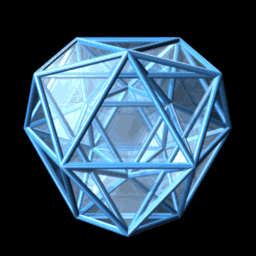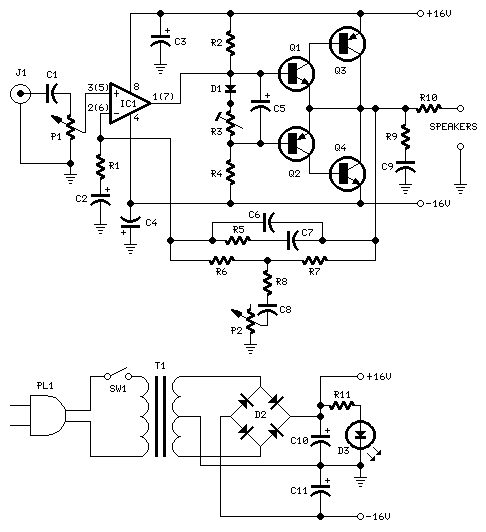


|
|

|
As a mathematician who has gotten interested in the problems facing our planet, I've been trying to cook up some new projects to work on. Over the decades I've spent a lot of time studying quantum field theory, quantum gravity, n-categories, and numerous pretty topics in pure math. My accumulated knowledge doesn't seem terribly relevant to my new goals. But I don't feel like doing a complete 'brain dump' and starting from scratch. And my day job still requires that I prove theorems.
I wish there were a branch of mathematics—in my dreams I call it green mathematics—that would interact with biology and ecology just as fruitfully as traditional mathematics interacts with physics. If the 20th century was the century of physics, while the 21st is the century of biology, shouldn't mathematics change too? As we struggle to understand and improve humanity's interaction with the biosphere, shouldn't mathematicians have some role to play?
Of course, it's possible that when you study truly complex systems—from a living cell to the Earth as a whole—mathematics loses the unreasonable effectiveness it so famously has when it comes to simple things like elementary particles. So, maybe there is no 'green mathematics'.
Or maybe 'green mathematics' can only be born after we realize it needs to be fundamentally different than traditional mathematics. For starters, it may require massive use of computers, instead of the paper-and-pencil methods that work so well in traditional math. Simulations might become more important than proofs. That's okay with me. Mathematicians like things to be elegant—but one can still have elegant definitions and elegant models, even if one needs computer simulations to see how the models behave.
Perhaps 'green mathematics' will require a radical shift of viewpoint that we can barely begin to imagine.
It's also possible that 'green mathematics' already exists in preliminary form, scattered throughout many different fields: mathematical biology, quantitative ecology, bioinformatics, artificial life studies, and so on. Maybe we just need more mathematicians to learn these fields and seek to synthesize them.
I'm not sure what I think about this 'green mathematics' idea. But I think I'm getting a vague feel for it. This may sound corny, but I feel it should be about structures that are more like this:

than this:

I've spent a long time exploring the crystalline beauty of traditional mathematics, but now I'm feeling an urge to study something slightly more earthy.
When dreaming of grand syntheses, it's easy to get bogged down in vague generalities. Let's start with something smaller and more manageable.
Network theory, and the use of diagrams, have emerged independently in many fields of science. In particle physics we have Feynman diagrams:
In the humbler but more practical field of electronics we have circuit diagrams:

Throughout engineering we also have various other styles of diagram, such as bond graphs:
I've already told you about Petri nets, which are popular in computer science... but also nice for describing chemical reactions:
'Chemical reaction networks' do a similar job, in a simpler way:
Chemistry shades imperceptibly into biology, and biology uses so many styles of diagram that an organization has tried to standardize them:
SBGN is made up of 3 different languages, representing different visions of biological systems. Each language involves a comprehensive set of symbols with precise semantics, together with detailed syntactic rules how maps are to be interpreted:
Biology shades into ecology, and in the 1950s, Howard T. Odum developed the 'Energy Systems Language' while studying tropical forests. Odum is now considered to be the founder of 'systems ecology'. If you can get ahold of this big fat book, you'll see it's packed with interesting diagrams describing the flow of energy through ecosystems:
His language is sometimes called 'Energese', for short:
The list goes on and on, and I won't try for completeness... but we shouldn't skip probability theory, statistics and machine learning! A Bayesian network, also known as a "belief network", is a way to represent knowledge about some domain: it consists of a graph where the nodes are labelled by random variables and the edges represent probabilistic dependencies between these random variables. Various styles of diagrams have been used for these:
And don't forget neural networks!
It's clear that people from different subjects are reinventing the same kinds of diagrams. It's also clear that diagrams are being used in a number of fundamentally different ways. So, there's a lot to sort out.
I already mentioned one attempt to straighten things out: Systems Biology Graphical Notation. But that's not the only one. For example, in 2001 the International Council on Systems Engineering set up a committee to customize their existing Unified Modeling Language and create something called Systems Modeling Language. This features nine types of diagrams!
So, people are already trying to systematize the use of diagrams. But mathematicians should join the fray.
Why? Because mathematicians are especially good at soaring above the particulars and seeing general patterns. Also, they know ways to think of diagrams, not just as handy tools, but as rigorously defined structures that you can prove theorems about... with the help of category theory.
I've written a bit about diagrams already, but not their 'green' applications. Instead, I focused on their applications to traditional subjects like topology, physics, logic and computation:
It would be good to expand this circle of ideas to include chemistry, biology, ecology, statistics, and so on. There should be a mathematical theory underlying the use of networks in all these disciplines.
I've started a project on this with Jacob Biamonte, who works on two other applications of diagrams, namely to quantum computation and condensed matter physics:
So far we've focused on one aspect: stochastic Petri nets, which are used to describe chemical reactions and also certain predator-prey models in quantitative ecology. In the posts to come, I want to show how ideas from quantum field theory be used in studying stochastic Petri nets, and how this relates to the 'categorification' of Feynman diagram theory.
You can also read comments on Azimuth, and make your own comments or ask questions there!
|
|

|